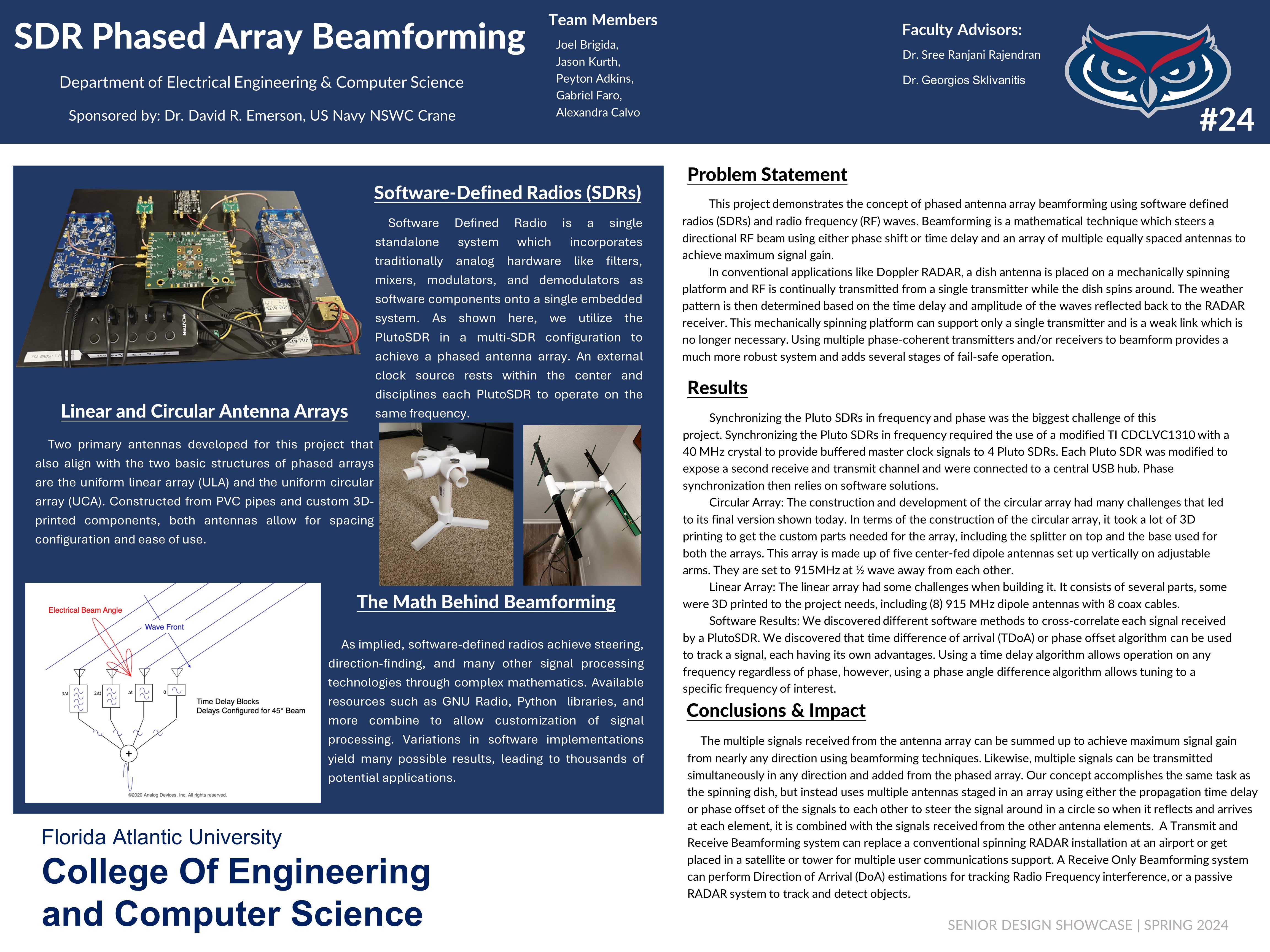Phased Antenna Array Beamforming

Overview
This project demonstrates the concept of phased antenna array beamforming using radio waves and software defined radios (SDRs). Beamforming is a mathematical technique which steers a directional beam of radio waves using either phase shift or time delay and an array of multiple equally spaced antennas to achieve maximum signal gain. In conventional applications like Doppler RADAR, a dish antenna is placed on a mechanically spinning platform and the radio waves are continually transmitted while the dish spins around. The weather pattern is then determined based on the time delay and amplitude of the waves reflected into to the RADAR receiver. This mechanically spinning platform is no longer necessary when using multiple phase-coherent transmitters and/or receivers to beamform. This concept accomplishes the same task as the spinning dish, but instead uses multiple antennas staged in an array using either the propagation time delay or phase offset of the signals to each other to steer the signal around in a circle so when it reflects and arrives at each element, it is combined with the signals received from the other antenna elements.
Community Benefit
The multiple signals received from the antenna array can be summed up to achieve maximum signal gain from any direction using beamforming techniques. Likewise, multiple signals can be transmitted simultaneously in any direction and added from the phased array. This eliminates the mechanically spinning dish and adds several stages of fail-safe operation. A Transmit and Receive Beamforming system can replace a conventional spinning RADAR installation at an airport or get placed in a satellite or tower for multiple user communications support. A Receive Only Beamforming system can perform Direction of Arrival (DoA) estimations for tracking Radio Frequency interference, or a passive RADAR system to track and detect objects.
Team Members
Sponsored By:
- David Emerson
- US NAVY NSWC Crane